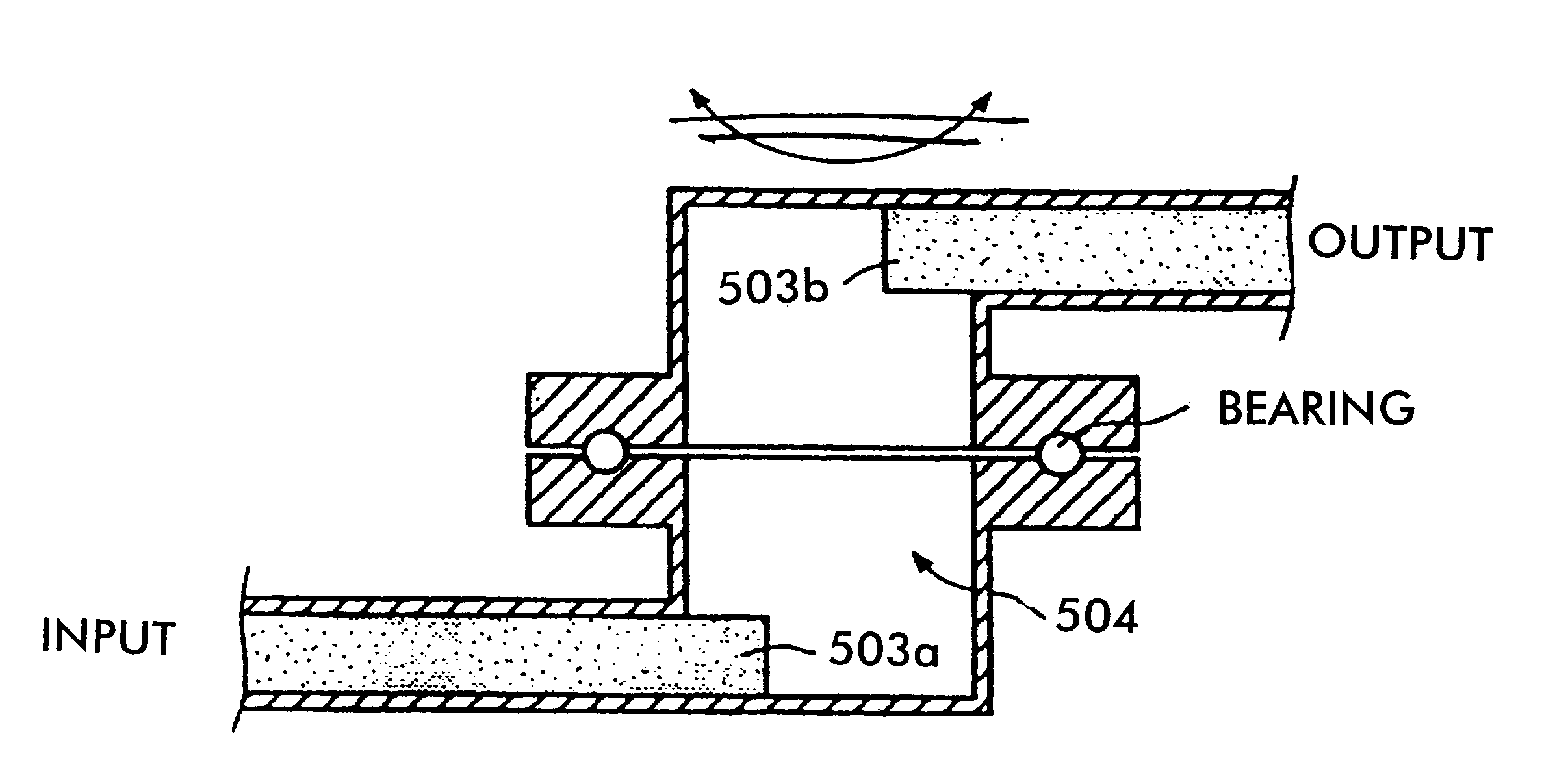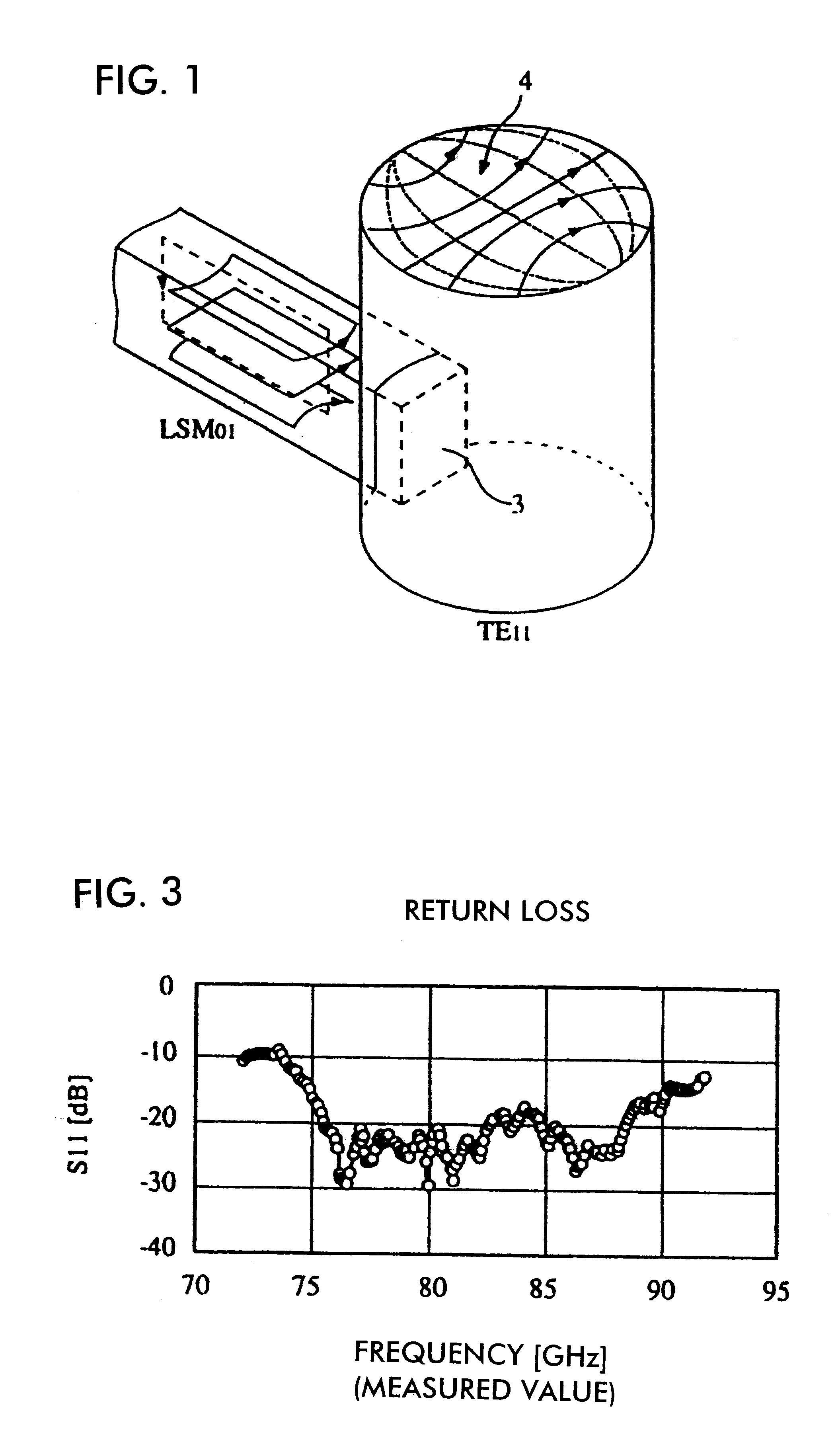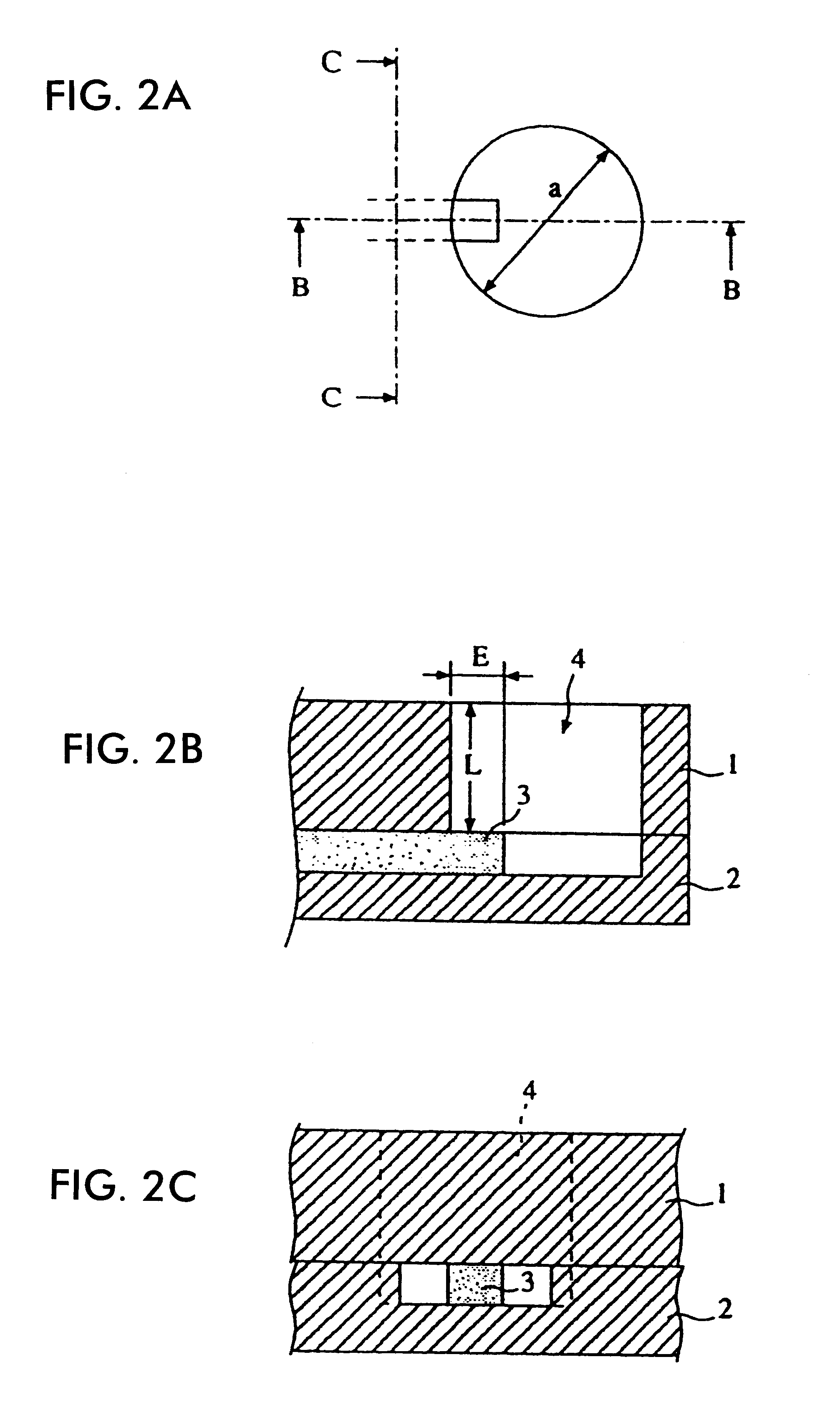Line transition device between dielectric waveguide and waveguide, and oscillator, and transmitter using the same
a technology of dielectric waveguide and waveguide, which is applied in the direction of waveguides, resonators, electrical equipment, etc., can solve the problems of lowering the transmission efficiency, high cost, and inconvenient changing of the line transition devi
- Summary
- Abstract
- Description
- Claims
- Application Information
AI Technical Summary
Benefits of technology
Problems solved by technology
Method used
Image
Examples
first embodiment
A construction of a transition device between a dielectric-waveguide and a waveguide according to the present invention is described with reference to FIGS. 1 to 3. In FIGS. 2A to 2C, conductive plates 1 and 2 are provided so as to surround a dielectric strip 3. The conductive plates 1 and 2 and the dielectric strip 3 form an NRD guide. The conductive plate 1 has a columnar hole of which the inner diameter is .phi.a and the depth is L. The conductive plate 2 has a concave part of which the inner diameter is .phi.a and the depth is the same as the height of the dielectric strip 3. When the conductive plate 1 is stacked on the conductive plate 2, the columnar cavity waveguide 4 is formed by overlapping the hole of the conductive plate 1 with the concave part of the conductive plate 2. The cross section of the waveguide is not necessarily circular; it may be angular as required.
FIG. 1 shows an engaging relationship between the cavity waveguide 4 and the dielectric strip 3 of the NRD gu...
second embodiment
Another example of a line transition device according to the present invention is described with reference to FIGS. 4A, 4B, 5A, and 5B. In FIG. 4A, a pair of projections 5 is disposed on the inner wall of the waveguide 4 above the dielectric strip 3 of the NRD guide so that the inner diameter of the waveguide 4 is narrowed in the direction of the electric field in the circular TE.sub.11 mode. The impedance of a region in which the pair of projections 5 face each other has an intermediate value between the impedance of the NRD guide and that of the waveguide 4. Accordingly, by setting the distance between the pair of the projections 5 to an appropriate value, matching between the impedance of the NRD guide and that of the waveguide 4 can be achieved.
In FIG. 4B, instead of the pair of the projections 5, a screw 6 is disposed. By adjusting the insertion depth of the screw 6, the impedance of the waveguide 4 can be changed. As long as the internal impedance of the waveguide 4 can be adj...
third embodiment
FIGS. 6A and 6B show a construction of a line transition device according to a In this embodiment, a rectangular cavity waveguide 104 is used instead of the columnar cavity waveguide 4 in the previous embodiments. It is desirable that the propagating direction of the electromagnetic wave through the waveguide 104 is perpendicular to that of the electromagnetic wave through the NRD guide. Dimensions a and b of the waveguide 104 are appropriately determined in accordance with the operating frequency. A solid line arrow indicates the electric field distribution and a broken line arrow, perpendicular to the solid line arrow, indicates the magnetic field distribution. The basic transmission mode of the NRD guide is an LSM.sub.01 mode, the same as in FIG. 1. The basic transmission mode of the rectangular waveguide 104 is a rectangular TE.sub.10 mode. Because the direction of the magnetic field in the TE.sub.10 mode corresponds to that of the extension of a dielectric strip 103 in the mag...
PUM
 Login to View More
Login to View More Abstract
Description
Claims
Application Information
 Login to View More
Login to View More - R&D
- Intellectual Property
- Life Sciences
- Materials
- Tech Scout
- Unparalleled Data Quality
- Higher Quality Content
- 60% Fewer Hallucinations
Browse by: Latest US Patents, China's latest patents, Technical Efficacy Thesaurus, Application Domain, Technology Topic, Popular Technical Reports.
© 2025 PatSnap. All rights reserved.Legal|Privacy policy|Modern Slavery Act Transparency Statement|Sitemap|About US| Contact US: help@patsnap.com



